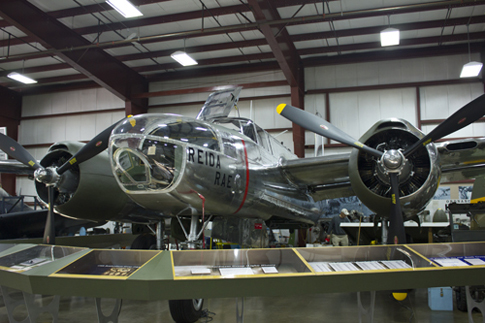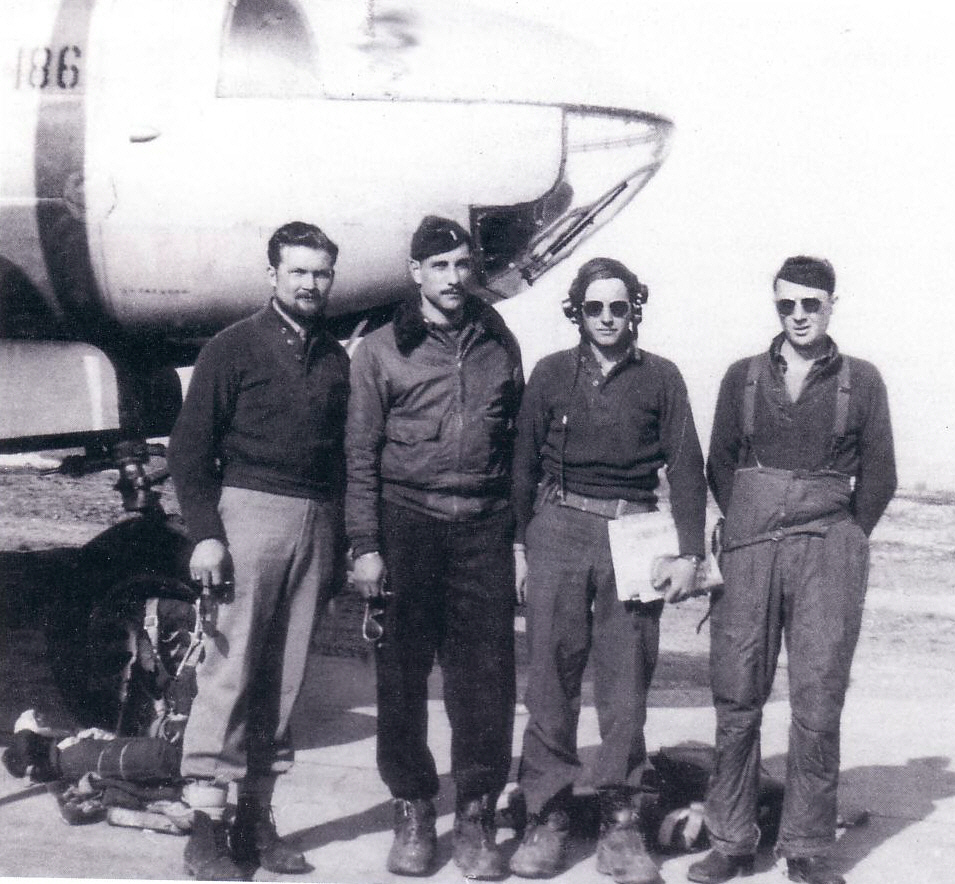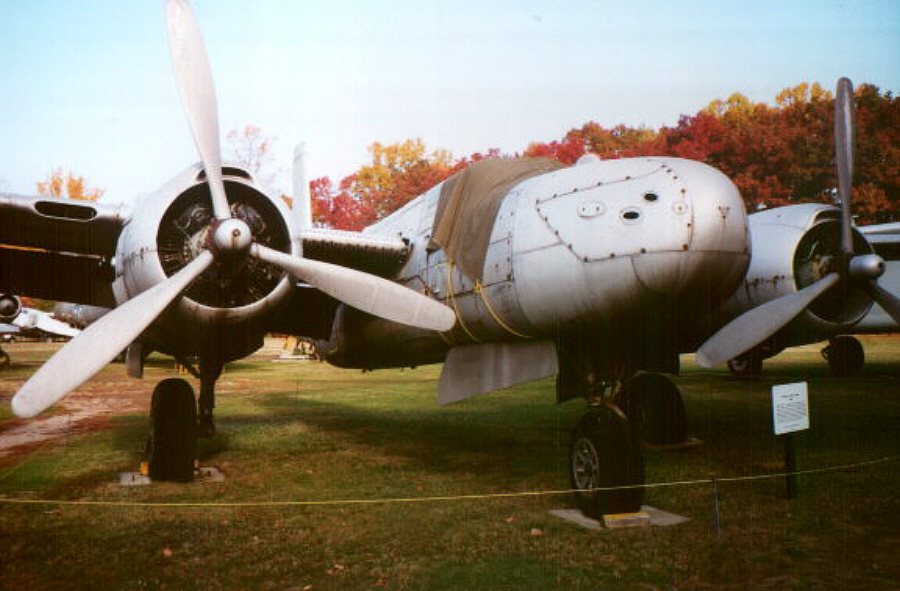
|

|
Carl Sgamboti, the Reida Rae
project crew chief at the New England Air Museum, was good enough to send me through some wonderful shots of 43-22499 undergoing
restoration works.
Carl's web site dedicated
to the project can be seen at http://sgamboti.com/cts/a-26_project/, so take a closer look at the progress and history of this
soon again to be great aeroplane.
For further reading see: http://darwinswar.com/2009/03/
Page 2 - Disassembly and Transporting A-26 Invader Reida Rae at the City of Bridgeport, for its journey to the New England
Air Museum August 1971
Page 3 - The restoration
The history of 43-22499
Military Ownership History of the NEAM A-26 Douglas Invader (43-22499)
-
November 15, 1944 -Manufactured by Douglas Aircraft Company, Tulsa,
OK and delivered to the USAAF at Hunter AAF, GA
-
December 1944 – To Ninth Air Force, European Theater of Operations
-
December 1944 –
August 1945 – Service with the 671st Bombardment Squadron of the
416th Bombardment Group (Light)
-
August 17, 1945
– Returned to US. 487th AAF Base Unit. Hunter Field, GA
-
January 31, 1945
– Transferred to 4255th AAF Base Unit, Grenada Field, MS (storage)
-
March 19, 1946 – Transferred to Air Transport Command, Ferrying Division
-
March 31, 1946
– Transferred to 4160th AAF Base Unit (Air Materiel Command), Hobbs
AAF (storage)
-
August 5, 1947
– Transferred to 4135th Base Unit, Hill
AFB, Ogden, UT
(ground instructional training)
-
June 1, 1948 – Storage “non-cocooned”.
Redesignated from A-26C
to B26-C.
-
March 1, 1949 – Redesignated as Utility Transportation Aircraft.
-
March 11, 1952
– Ogden Air
Materiel Area. Depot modification.
-
March 27, 1952
– Transferred to Far East Air Forces (FEACOM),
6400th Air Depot Wing
-
April 30, 1952
– May 15, 1952 – Enroute to Tachikawa,
Japan.
-
June 3, 1952 – Transferred to 126th Bomb Wing (Light), Laon/Couvron Air Base, France.
-
February 3, 1953 – Transferred to Rhein Main AB, Germany attached to the 60th
Troop Carrier Wing.
-
May 24, 1953 – Transferred to the 38th Bomb Wing (Light), Furstenfeldbruck AB, Germany.
-
October 12, 1954
– Transferred to 7373rd Maintenance Group, Chateauroux, France.
-
October 1955 – Transferred to Fairey Aviation Co., Manchester, England for contract modification.
-
July 1956 – Transferred to Davis-Monthan AFB, AZ.
-
August 1957 – Designated as ”excess”.
-
October 1957 – Dropped from inventory.
Military History
The Douglas Aircraft Company at its Tulsa, Oklahoma plant
manufactured our aircraft in 1944. The manufacturing lot was A-26C-20-DT. Douglas delivered to the USAAF on November 4, 1944
and ferried to France in December 1944. It was assigned to the 416th Bomb Group (Light), 671st Bomb Squadron stationed
at A-55 at Melun, France.
At this time, we do not know how many combat missions the
aircraft was flown on because the Form 1 logbook is missing. However, based on USAAF documents and discussions with some veterans
who kept their own flight records, the aircraft was on the following missions with the 416th BG.
Mission 226 on March 9,
1945, AM- Butzbach Marshalling Yards
Mission 238 on March 17, 1945, Bad Homburg Marshalling Yards
Mission 239 on March
18, 1945, Worms Communications Center
Civilian
Ownership History of the NEAM A-26 Douglas Invader (N86481)
-
June 18, 1958 –Reg:
N86481 National Metals Corporation, Box 6462, Phoenix, AZ
-
July 10, 1959 – Acme Aircraft Parts, Inc. Box 31, Compton, CA
-
April 23, 1962
– Milton N. White (Trustee), Los Angeles Universal Transportation Corp., 3600
Wilshire Blvd., LAX
-
May 1, 1962 – John Paul Wilds, Rt.2, Box 366, Escalon,
CA
-
September 26, 1963
– Graubert Aviation, Valparaiso, IN
-
March 10, 1965
– Francis A. Daley, Ten Manor
Rd., Old Greenwich, CT
-
September 1, 1965
– Lease Air Service, Candlewood Shores, Brookfield, CT
-
December 2, 1966
– John Kramer, 520 Fifth Avenue,
New York City, NY
-
December 9, 1966
– Consolidated Aircraft Sales, Inc., 169 Passaic Avenue, Fairfield, NJ
-
August, 1971 –
Ownership transferred from City of Bridgeport
to The New England Air Museum
Civilian History
After the aircraft was struck off Air Force inventory in
1957 and aircraft ownership passed to the National Metals Corporation of Phoenix, Arizona on June 18, 1958. After eight years
of civilian service, ownership passed to the tenth and final civilian owner, Consolidated Aircraft Sales of Fairfield, New
Jersey. Consolidated Aircraft Sales eventually abandoned the aircraft in Bridgeport, Connecticut in 1969. In 1971, the New
England Air Museum took ownership of the aircraft from the City of Bridgeport.
In August 1971, the Museum
arranged for transportation of the aircraft to its museum facilities in Windsor Locks, Connecticut. Click on the photo on
the right to view photos of the aircraft as it appeared in Bridgeport, CT and some photos of the disassembled parts loaded
on trucks.
History relating to the aircrew of Reida Rae
The NEAM archives have information
on our aircraft and some photos and letters from veterans that had some connection to the aircraft. In order to update the
information, contact with the appropriate veterans, veteran group and relatives was initiated. Ralph Conte, a member of the
416th BG who wrote a book on the unit, was contacted. Our veteran name information was given to him and, through
his help, the daughter of the gunner on the aircraft (C. Houston Corbitt) made contact with Carl Sgamboti. The NEAM
work on the aircraft was discussed and an invitation was made to donate either copies or originals of information that she
has from her father that could reinforce the human side of the story of our aircraft.
In 1994, Jack Buskirk (pilot) visited the museum. Recent
research indicates that Jack Buskirk passed away in 2001 and C. Houston Corbitt passed away in 2002. According to Corbitt’s
daughter, Robert Hanna, the bombardier died in an air crash in 1945. This is not substantiated yet.
Historical research continued during the reporting period. Research
indicated the following concerning the veterans known to have either flown or maintained “Reida Rae”.
In front of Reida Rae after Mission 226, March 9, 1945
Left to right Claude Brown (pilot), Jim Kerns (BN), Dick Muir (BN), Herb Sunderland (gunner)
Reida Rae at the New England
Air Museum in 2003
The New England Air Museum
|
The New England Air Museum is owned and operated by the Connecticut
Aeronautical Historical Association, a private, non-profit educational institution organized in 1959. Located at Bradley International
Airport in Windsor Locks, the Museum is the largest aviation museum in New England. This educational organization is dedicated
to preserving and presenting historically significant aircraft and related artifacts, engaging visitors through high-quality
exhibits helping them to understand aviation technology and history and inspiring students through innovative and hands-on
educational programs. The Museum is governed by a volunteer Board of Directors and run by four (4) full-time employees, four
(4) part-time employees, and over 175 volunteers. |
Museum History |
In 1981, the first of the Museum's existing five buildings (Civil,
Military, 58th Bomb Wing Memorial and Restoration Hangar and storage building) was erected on its current site after a tornado
destroyed the Museum's former location along Route 75 two years earlier. Today, the Museum houses one of the world's most
outstanding collections of historic aviation artifacts; more than 80 aircraft and an extensive collection of engines, instruments,
aircraft parts, uniforms and personal memorabilia. Within this collection are the last remaining four-engine American flying
boat, the Sikorsky VS-44A, donated by its previous owner, actress Maureen O'Hara and restored to original condition; a B-29
Bomber; the Silas Brooks Balloon Basket (1870), the oldest surviving aircraft in the United States; the Bunce-Curtiss Pusher
(1912), the oldest surviving Connecticut-built airplane; the Sikorsky S-39, the oldest surviving Sikorsky aircraft; and a
Kaman K-225 helicopter, the oldest surviving Kaman-built aircraft. |
|
Museum Mission |
|
The New England Air Museum is committed to presenting the story
of aviation, the human genius that made it possible and the profound effects that it has had on the way in which we live.
We achieve this by: |
-
Preserving and presenting historically significant aircraft
and related artifacts
-
Engaging our visitors through high-quality exhibits that
help them understand aviation technology, history and the stories of the men and women who built, flew and made history with
these famous machines
-
Inspiring students through our innovative and hands-on
education programs delivered on-site and in schools that allow them to discover and reflect on aviation technology and history
and its ties to social studies, science, geography and technical advancements
Douglas A-26C Invader Reida Rae Unveiled

The restoration began in November 2003, then
the plane was moved from the Restoration Hangar to the Military Hangar where the restoration was completed. Following an exhaustive nine-year restoration, the combat-veteran Douglas A-26C Invader 43-22499 “Reida Rae” was unveiled to much fanfare at the
New England Air Museum in Windsor Locks, Connecticut, beautifully polished and sporting her
vanishingly-rare early-style upward hinged canopy.
First test flown in 1942, the Douglas A-26 Invader exceeded every stipulated
design specification. With its twin 2000hp Pratt & Whitney R-2800 Double Wasp engines, the “Invader” was faster, had better performance
and could carry more of a bomb load that either of the two primary medium bombers at the time, the North American B-25 Mitchell and the Martin B-26 Marauder.
The machine flew operations with the 416th Bombardment Group, 9th Air Force in Europe from December 1944 to August 1945, and will now form part of
an official memorial to the 416th at the museum.
On the morning of March 18, 1945, the A-26C Invader was one of 41 Invaders
from the 416th that flew from Laon in Northern France to attack German targets in the City of Worms in Southwestern Germany,
a major transportation and communications center located on the banks of the river Rhine. The mission became known as “Black
Sunday” with four aircraft shot down by antiaircraft fire and 23 more suffering moderate to heavy damage. Among the
losses that day was an A-26B flown by Lt James Kenney, hit in the port engine by flak and disintegrating in flames. Gunner/engineer
Staff Sergeant Jack Sittarich managed to bail-out of the doomed machine and spent the rest of the war in captivity in a German
POW camp. Sittarich was one of 12 veterans from the 416th to attend the unveiling.
|

|

|




